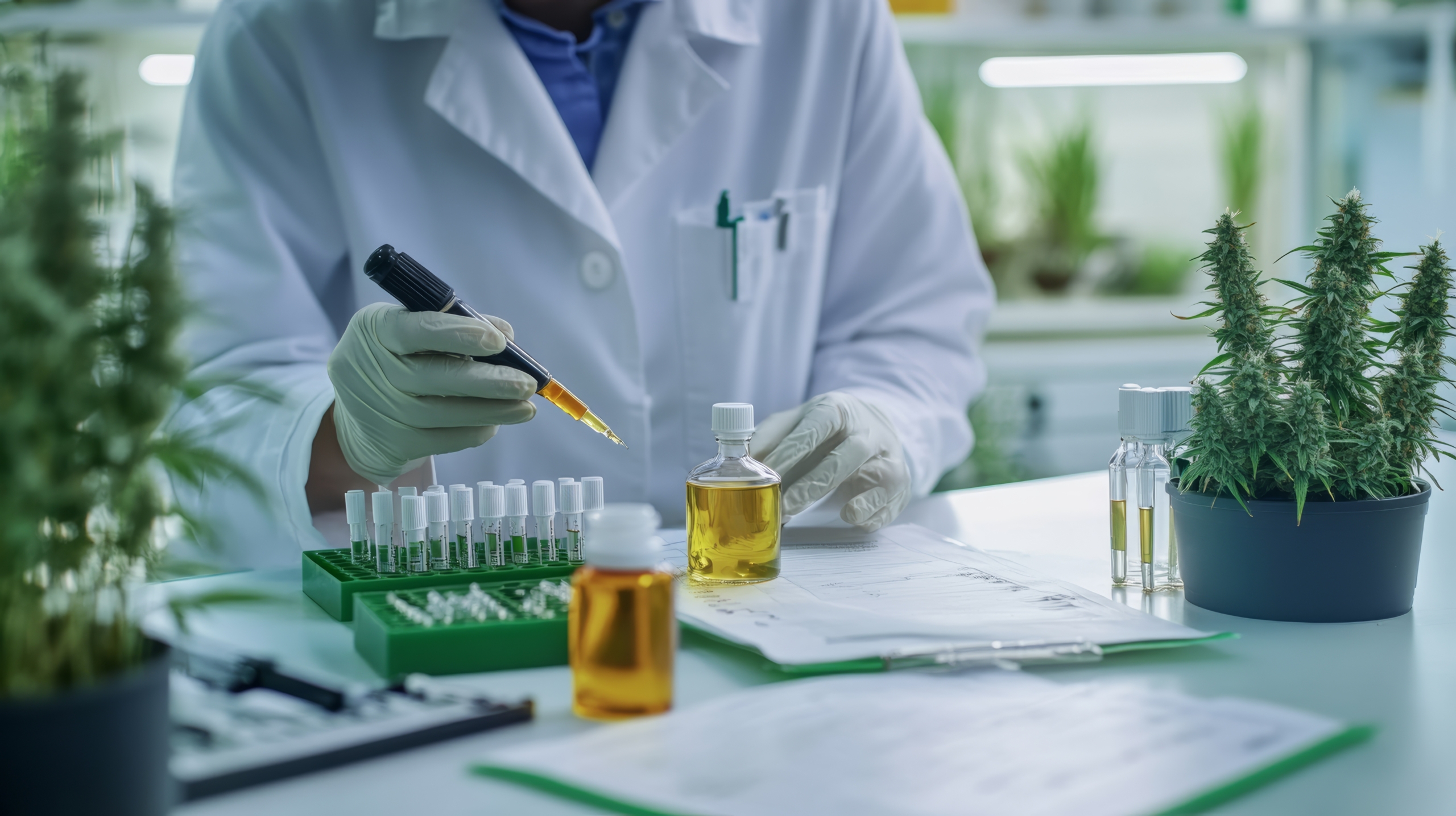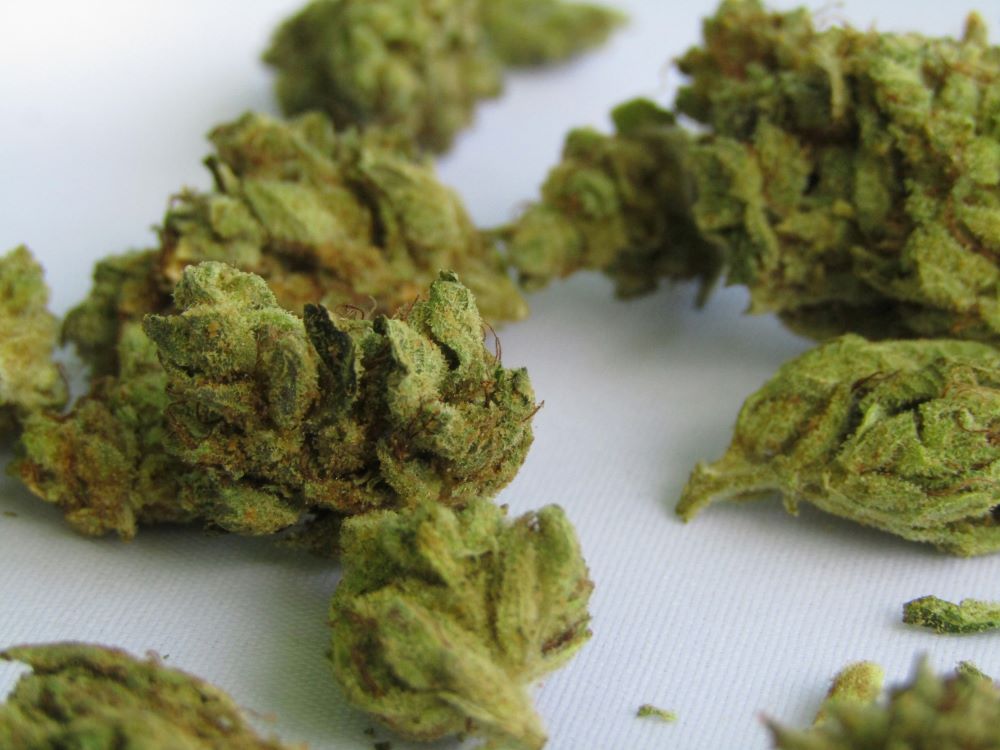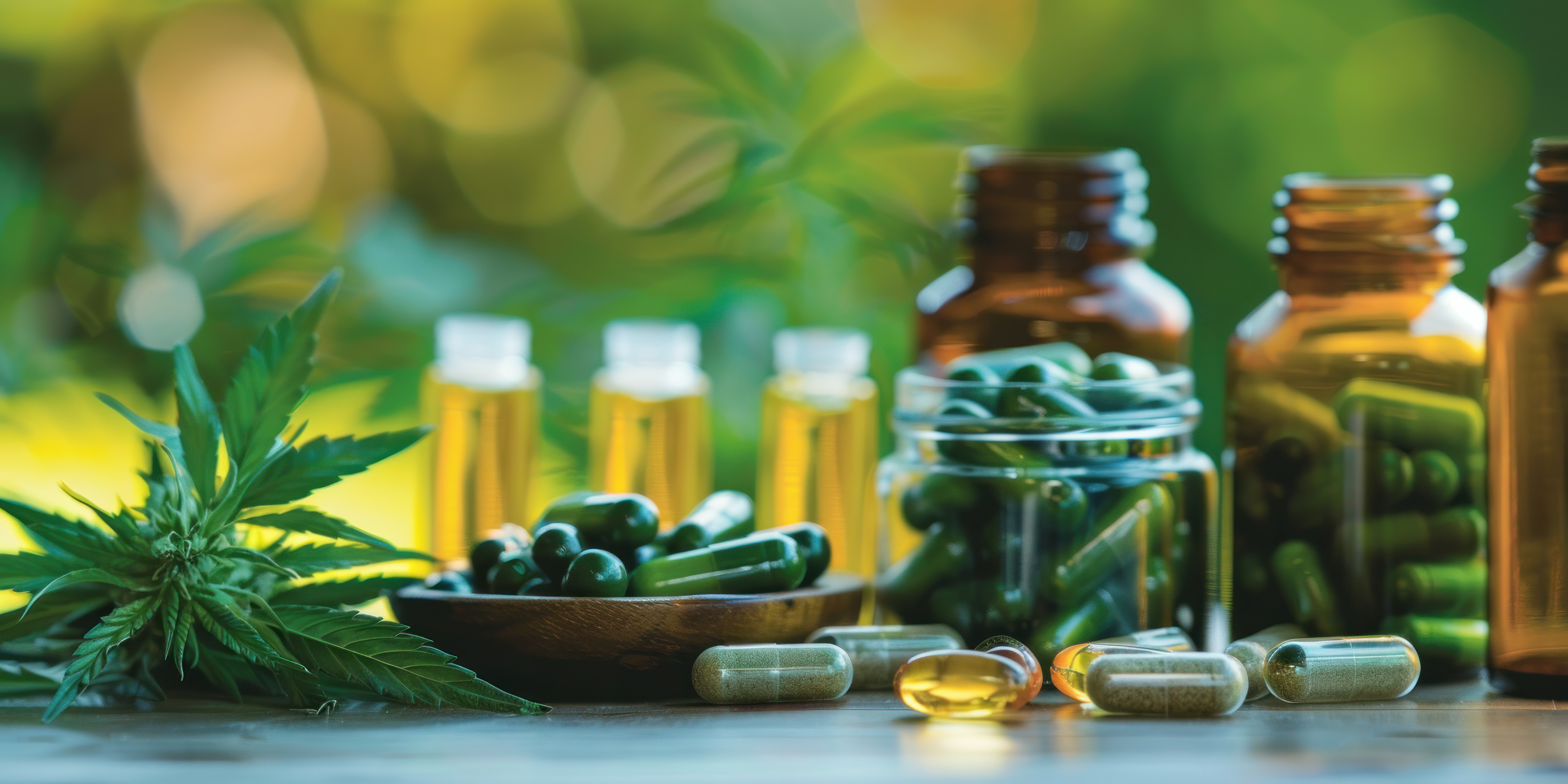What is the CBC Cannabinoid?
Cannabichromene (CBC) is one of the lesser-known cannabinoids found in the cannabis plant, but it plays a significant role in how cannabis affects the body. Unlike THC, CBC does not produce a “high,” making it a non-psychoactive option for those interested in the potential health benefits of cannabis without the mind-altering effects. CBC works with other cannabinoids, such as CBD and THC, to enhance the overall benefits of cannabis.
Understanding CBC is important because it may offer unique therapeutic properties that differ from other cannabinoids.
What is Cannabichromene (CBC)?
Cannabichromene (CBC) is a non-psychoactive cannabinoid found in the cannabis plant, meaning it does not produce a “high” like THC. The CBC cannabinoid is one of several cannabinoids, including CBD and THC, that interact with the body’s endocannabinoid system, particularly the CB2 receptor. CBC starts as cannabichromenic acid (CBCA), which converts to its active form during the plant’s growth.
Unlike other cannabinoids, CBC does not bind directly to CB1 receptors in the brain, so it isn’t considered a psychoactive cannabinoid. Instead, it may enhance the effect of cannabichromene by working with other cannabinoids like CBD and boosting the body’s natural endocannabinoid anandamide without causing side effects.
How CBC is Different from CBD and THC?
Cannabichromene (CBC), cannabidiol (CBD), and tetrahydrocannabinol (THC) are key cannabinoids with distinct effects:
- CBC (Cannabichromene): CBC is non-psychoactive; it does not bind to CB1 receptors in the brain, which is why it doesn’t produce a “high.” Instead, it binds primarily to CB2 receptors in the immune system, potentially reducing inflammation and pain. Unlike CBD, CBC’s effects are mainly outside the central nervous system.
- CBD (Cannabidiol): CBD is also non-psychoactive but works by enhancing the body’s own endocannabinoids, such as anandamide, which helps regulate pain and mood without a high. It has potential benefits for anxiety, seizures, and inflammation.
- THC (Tetrahydrocannabinol): THC is psychoactive, binding directly to CB1 receptors in the brain, causing a “high.” It is used for pain relief, appetite stimulation, and nausea reduction but may cause side effects like anxiety and paranoia.
Comparison of CBC, CBD, and THC
- Receptor Interaction:
- CBC: Primarily interacts with CB2 receptors in the immune system, which may help with inflammation and pain.
- CBD: Indirectly affects CB1 and CB2 receptors by enhancing the body’s natural endocannabinoids, like anandamide.
- THC: Directly binds to CB1 receptors in the brain, leading to psychoactive effects.
- Psychoactivity:
- CBC and CBD are non-psychoactive, offering therapeutic benefits without causing a high.
- THC is psychoactive, producing a high by directly affecting CB1 receptors.
- Therapeutic Uses:
- CBC: May help reduce inflammation, manage pain, promote brain cell growth, and support immune function.
- CBD: Used to alleviate anxiety, depression, seizures, and inflammation; helps calm the body and mind without psychoactive effects.
- THC: Effective for pain relief, appetite stimulation, and reducing nausea, but with psychoactive effects.
Unique Properties of CBC
- Non-Psychoactive: CBC does not produce a high, making it ideal for those seeking therapeutic benefits without psychoactive effects.
- Anti-Inflammatory: CBC binds to CB2 receptors in the immune system, potentially reducing inflammation and pain, which may benefit conditions like arthritis.
- Neuroprotective: CBC may promote the growth of new brain cells (neurogenesis), which could support brain health and help with conditions like Alzheimer’s.
- Synergistic Effects: CBC can enhance the effects of other cannabinoids, such as CBD and THC, through the “entourage effect,” potentially offering greater therapeutic benefits.
- Low Side Effects: CBC is less likely to cause side effects like anxiety or paranoia, making it a good option for those sensitive to THC’s psychoactive effects.

How CBC is Formed?
Cannabichromene (CBC) is naturally formed in the cannabis plant. It begins with a compound known as Cannabigerolic Acid (CBGA), often called the “mother of all cannabinoids” because it serves as the starting point for many other cannabinoids, including CBC, THC, and CBD. Over time, as the plant grows and is exposed to light, heat, and air, CBGA is converted into various cannabinoids, including CBC.
- Starting Compound: CBC begins as CBGA, the precursor to many cannabinoids.
- Natural Conversion: Exposure to light, heat, and air during the plant’s growth converts CBGA into CBC.
- Non-Psychoactive: CBC is non-psychoactive, meaning it does not cause a “high” like THC.
Biosynthesis of CBC from CBGA (Cannabigerolic Acid)
The biosynthesis of CBC occurs when CBGA is exposed to specific enzymes within the cannabis plant. These enzymes act like natural chemical tools, helping to convert CBGA into different cannabinoids, including Cannabichromene (CBC). The key enzyme responsible for this conversion is CBC synthase. When CBGA interacts with CBC synthase, it is transformed into cannabichromenic acid (CBCA), which then, under the influence of heat or light, becomes the active form of CBC.
- Enzyme Involvement: The enzyme CBC synthase is crucial in converting CBGA into CBC.
- Intermediate Step: CBGA first turns into CBCA before becoming CBC.
- Activation: Heat or light exposure finalizes the conversion into active CBC cannabinoid.
Role of Enzymes in Converting CBGA to CBC
Enzymes play a critical role in the formation of CBC by converting CBGA into CBCA, and eventually into CBC. Enzymes like CBC synthase are essential because, without them, the cannabis plant would not produce CBC. These enzymes act like tiny tools that help shape the plant’s chemical structure, turning CBGA into CBCA, which then transforms into CBC when exposed to the right conditions, such as heat or light.
- Enzyme Function: CBC synthase converts CBGA into CBCA.
- Final Conversion: CBCA becomes CBC after exposure to heat or light.
- Interaction: CBC interacts mainly with CB2 receptors, which may help with inflammation and pain without causing the psychoactive effects associated with THC.
CBC in the Cannabis Plant
Cannabichromene (CBC) is one of the many cannabinoids found in cannabis, alongside THC and CBD. It begins as cannabichromenic acid (CBCA), which naturally changes into CBC cannabinoid as the plant grows. This process happens when the plant is exposed to sunlight, heat, and oxygen.
- Occurrence in the Plant: CBC is more common in younger cannabis plants. As the plant matures, CBCA converts to CBC. The concentration of CBC varies depending on the strain and the conditions in which it is grown, like light exposure and temperature.
- The concentration of CBC: CBC is usually present in smaller amounts compared to THC and CBD, but it is still a significant part of the plant’s profile of cannabinoids including THC and CBD. Some cannabis strains are specifically bred to have higher CBC levels due to its potential health benefits.
- Role in Cannabis: CBC contributes to the “entourage effect,” where cannabinoids, including CBC, work together to enhance the overall effects of cannabis, providing more comprehensive benefits than when used alone.
For those looking to explore the potential benefits of cannabichromene CBC or other cannabinoids, consulting a marijuana doctor can help determine which strain and cannabinoid profile might be best for individual health needs.
Potential Benefits of CBC: Medical and Therapeutic Uses
CBC cannabinoid (Cannabichromene) offers several potential health benefits without causing a “high” like THC, making it suitable for those seeking therapeutic effects without psychoactive effects.
- Anti-Inflammatory Properties: CBC may help reduce inflammation by interacting with the body’s receptors, offering a natural alternative to traditional anti-inflammatory medications.
- Pain Relief: CBC might alleviate pain by activating specific receptors and working with natural compounds like anandamide to reduce pain signals.
- Brain Health: CBC could support brain health by promoting the growth of new brain cells (neurogenesis), which may benefit conditions like Alzheimer’s or other neurodegenerative diseases.
- Antibacterial and Antifungal Effects: CBC has potential antibacterial and antifungal properties that could help prevent or treat infections.

Medical and Therapeutic Uses
- Combining with Other Cannabinoids: CBC enhances the effects of other cannabinoids like THC and CBD, a synergy known as the “entourage effect,” which can provide more effective relief for pain, inflammation, and anxiety.
- Support for Mental Health: Preliminary studies suggest CBC may aid in managing mood disorders like depression and anxiety by increasing levels of the body’s own endocannabinoids.
If you’re curious about what is CBC cannabinoid and how it might benefit you, consulting a marijuana doctor can help guide you on using CBC and other cannabinoids for your specific health needs
Comparison with Other Cannabinoids
CBC cannabinoid (Cannabichromene) is similar to other cannabinoids like CBD and THC but has unique characteristics:
- No Psychoactive Effects: Unlike THC, CBC does not cause a “high” because it doesn’t bind to CB1 receptors in the brain.
- Anti-Inflammatory Properties: Like CBD, CBC may help reduce inflammation by interacting with CB2 receptors in the immune system.
- Synergy with Other Cannabinoids: CBC can enhance the effects of other cannabinoids, such as CBD and THC, through the “entourage effect,” providing more comprehensive relief for conditions like pain and anxiety.
- Unique Interaction: While CBD works by indirectly influencing the endocannabinoid system, CBC directly interacts with CB2 receptors, offering a different pathway for potential therapeutic effects.
Unique Therapeutic Properties of CBC
Cannabichromene (CBC) has several distinct therapeutic properties:
- Brain Health: CBC may promote the growth of new brain cells, a process known as neurogenesis, which could be beneficial for conditions like Alzheimer’s disease.
- Antibacterial and Antifungal: CBC has potential antibacterial and antifungal properties, which may help in preventing or treating infections.
- Non-Psychoactive: Unlike THC, CBC does not produce a high, making it suitable for those seeking therapeutic benefits without mind-altering effects.
- Synergistic Potential: CBC may enhance the effects of other cannabinoids, including CBD and THC, making it a valuable component in full-spectrum cannabis products.
How to Use CBC?
You can use CBC cannabinoids in several ways, depending on your needs and preferences:
- Oils and Tinctures: CBC is often available in oils and tinctures that you can take under the tongue for quick absorption. This method is easy and allows for precise dosing.
- Capsules and Edibles: CBC can be found in capsules or added to food products like gummies. These methods are convenient for those who prefer not to taste the oil.
- Topicals: CBC can also be used in creams and lotions applied directly to the skin. This method may help target localized pain or inflammation.
To learn more about what is CBC cannabinoid and how it might benefit you, you can contact us for personalized advice on using CBC and other cannabinoids for your specific health needs.
Potential Side Effects and Safety
While CBC cannabinoid (Cannabichromene) is considered safe and non-psychoactive, some users may still experience mild side effects. Since CBC does not bind to the brain’s CB1 receptors like THC, it generally does not cause “high” or mind-altering effects. However, as with any cannabinoid, individuals may react differently based on their unique body chemistry.
- Possible Side Effects: Common side effects might include dry mouth, slight dizziness, or mild digestive discomfort. These are usually temporary and go away as the body adjusts.
- Interactions with Medications: CBC could potentially interact with certain medications. It’s important to consult a healthcare provider before using CBC, especially if you are taking other medications.
- Safe Dosage: Start with a low dose and gradually increase to find the amount that works best for you. This approach can help minimize any potential side effects.
- Quality Matters: Always choose high-quality products made from cannabichromenic acid CBCA to ensure purity and safety. Look for products tested by third-party labs to confirm their cannabinoid content and absence of harmful substances.
Conclusion
CBC cannabinoid (Cannabichromene) is a unique compound found in cannabis that offers several potential health benefits without causing a “high.” For those asking, “What is CBC cannabinoid?”, it’s a non-psychoactive option that may help reduce inflammation, relieve pain, support brain health, and even fight infections. While CBC is generally safe, it’s always best to start with a low dose and consult with a healthcare provider, especially if you are taking other medications. Understanding the potential benefits and safe usage of CBC can help you make informed decisions about incorporating it into your wellness routine.






